This Charming Brooklyn Restaurant Was Inspired by a Sailor’s Peacoat
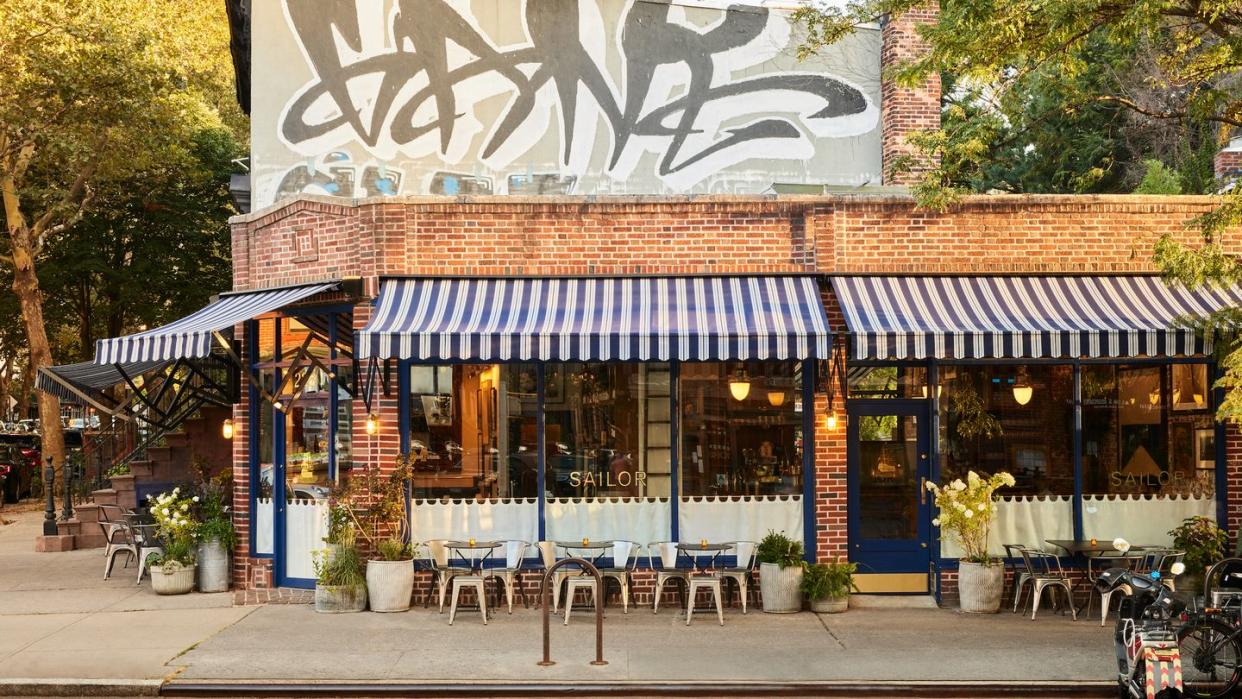
"Hearst Magazines and Yahoo may earn commission or revenue on some items through these links."
With its brick walls, wooden booths, and just eight tables, Sailor exudes the old-fashioned charm that makes it feel like it has lived on its Brooklyn corner for eons. But its small size and low-key charm belie the high-powered talent behind the restaurant that is currently one of New York City’s toughest reservations. The owner is Gabriel Sturman, whose Greenwich Village restaurants—including Joseph Leonard—have long been hot spots. The chef is April Bloomfield, ex-Spotted Pig, making her comeback to rave reviews for classic dishes like her half-roasted chicken with dried herb butter and ginger cake with vanilla ice cream.
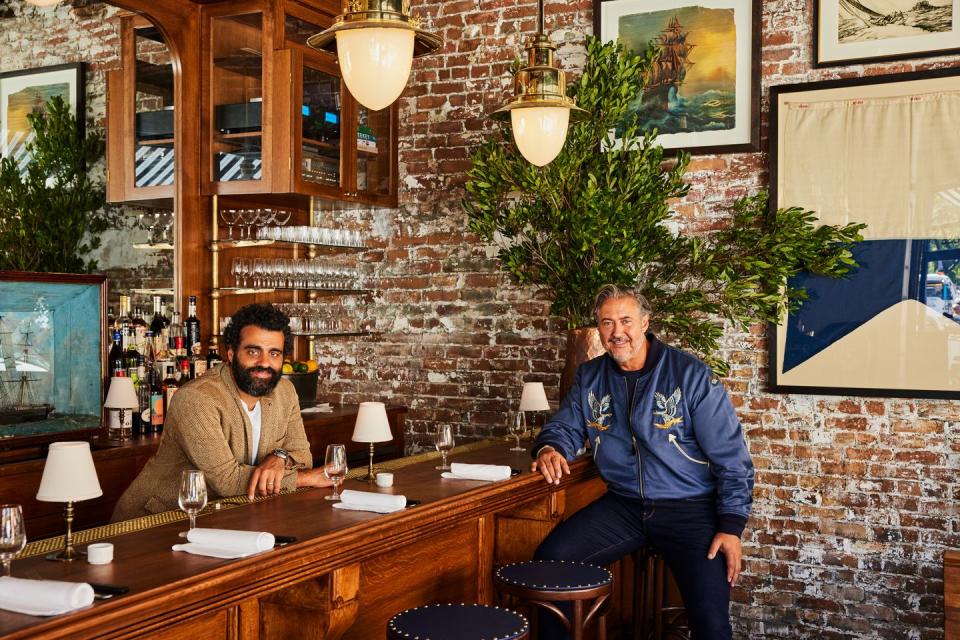
Pulling it all together, decor-wise, is ELLE DECOR A-List designer Alfredo Paredes who, prior to launching his eponymous studio in 2019, spent more than three decades at Ralph Lauren. There, he helped create the look of Ralph’s Paris, the Polo Bar in New York, and Ralph’s Coffee—not to mention numerous Ralph Lauren stores. “It’s all set design,” Paredes says of designing a restaurant. “We ask ourselves, What is the movie we want our patrons to experience?”
Sturman approached Paredes during the pandemic with his idea for a cozy but elegant restaurant in Fort Greene, his own Brooklyn neighborhood. “I love Alfredo’s aesthetic,” says Sturman, who showed the designer the Pinterest board he had been assembling for the Brooklyn eatery at their first meeting. “I knew what I wanted in my mind and that he could bring it to fruition and improve on it.”
The idea of Sailor, which Sturman owns with his wife, Gina, had nothing to do with seafood. “Gina and I hope at some point in our life to spend our days on or near the water,” he says. “The goal is to make it to sandy beaches and blue waters, docking from place to place.”
Here is how Paredes used design to bring the space—a former grocery store in a 1920s building—to life.
Start with Art
Paredes began the project as he always does: by taking inspiration from art. He searched for vintage and antique paintings and photographs of nautical New York, using them to create both the vibe and palette for the restaurant. “People don’t remember that New York has always been a port town,” Paredes says. “I looked especially at paintings by Carlton Theodore Chapman, an early-20th-century artist who painted scenes of New York City’s working docks. For the atmosphere, think New York City in the winter if you are a sailor in a tavern. It’s all imagination.”
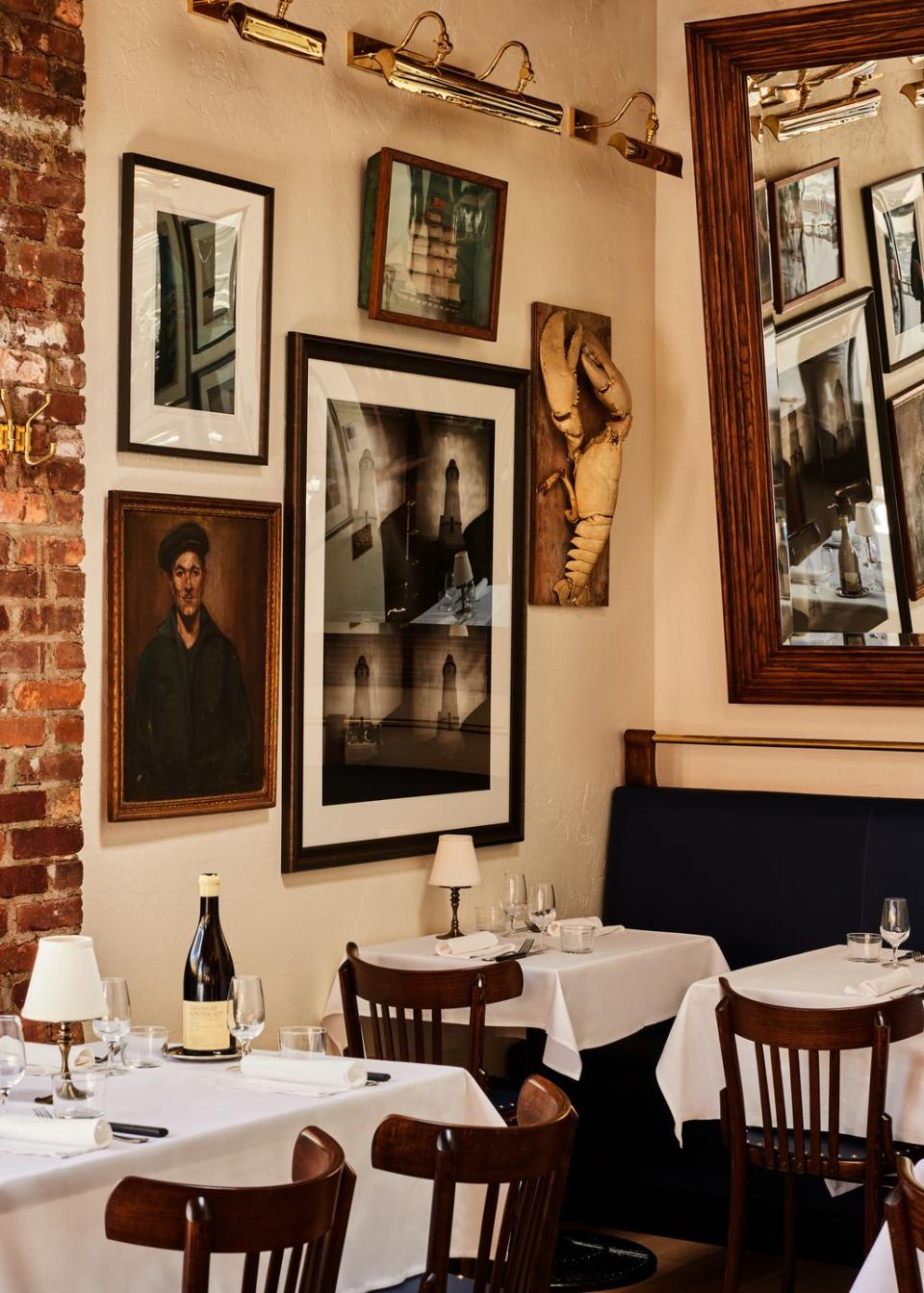
Just as he did at the Polo Bar in Manhattan, Paredes lined the walls with art, gallery style. The pieces include everything from nautical paintings to black-and-white photography, a José Picayo image of a woman in a sailor cap with a mustache, and a vintage mounted lobster. A friend’s gallery, Mate in San Francisco, was another great source for nautical objects and artwork.
Embrace Navy and Brass
The restaurant’s maritime theme also inspired the colors and textures of Sailor’s design—which is principally navy and blue with brass accents. “I kept thinking of a sailor’s peacoat with brass buttons,” he says. The scheme is subtly developed throughout, from the barstools with their blue leather upholstery and brass nails to the blue “pleather” vinyl banquettes.
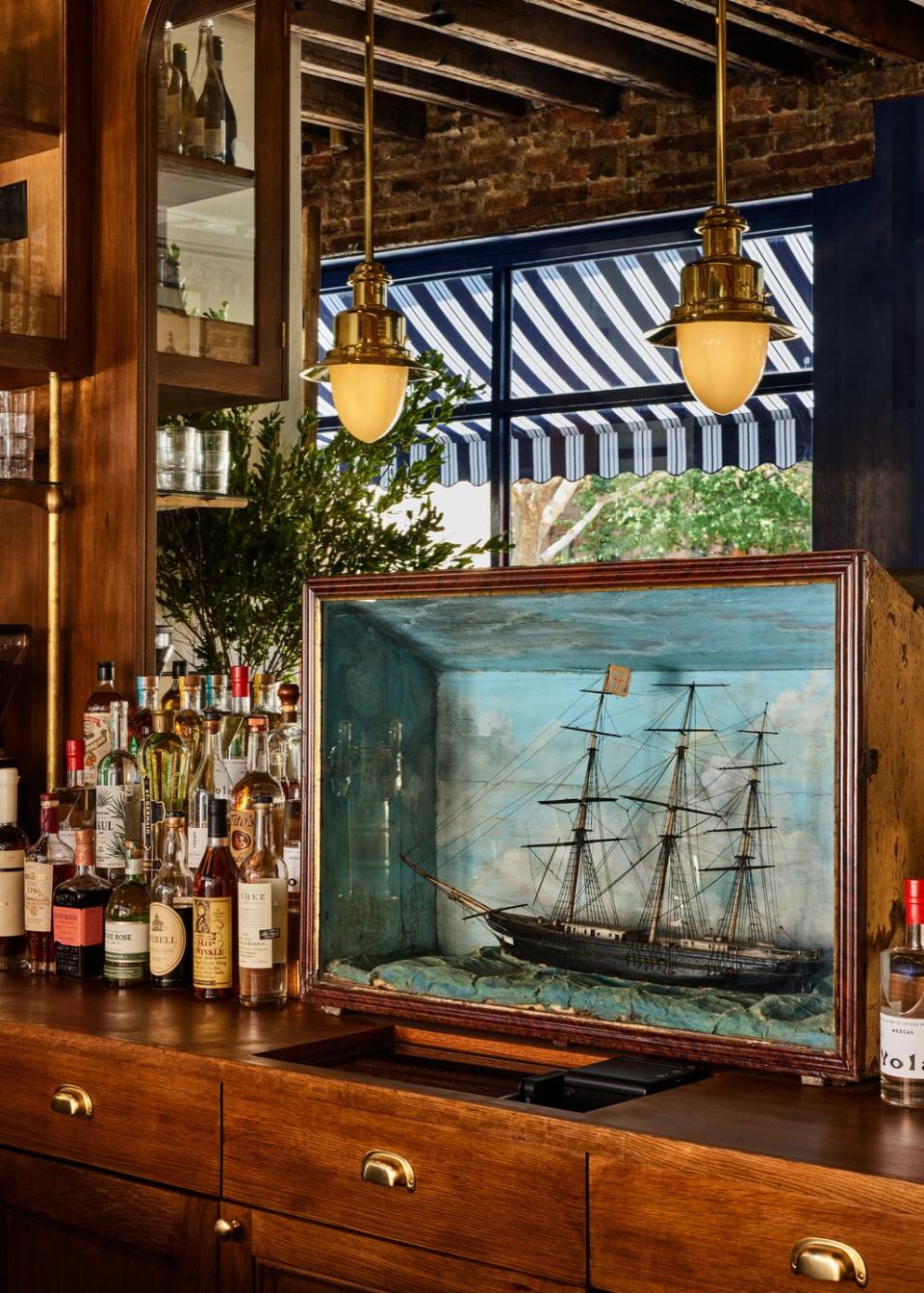
Brass touches appear throughout, from the lighting to the hardware on the wooden cabinetry. “Brass is especially nice at night,” Paredes notes. “It sparkles and catches light without being too in your face.”
Create a Sense of History
Both Sturman and Paredes wanted Sailor to feel steeped in the past. “It had to feel rustic; it had to feel Brooklyn,” Paredes says. To that end, they embraced the 1920s–30s architecture of the space, exposing the ceiling timbers and limewashing the original brick walls. They also integrated aged wood and antiques and installed reclaimed, wide plank oak wood floors. The hand-carved wood bar, based on one they saw in a photo, was custom made in reclaimed wood. The booths in the bar area were inspired by vintage English ferry benches.
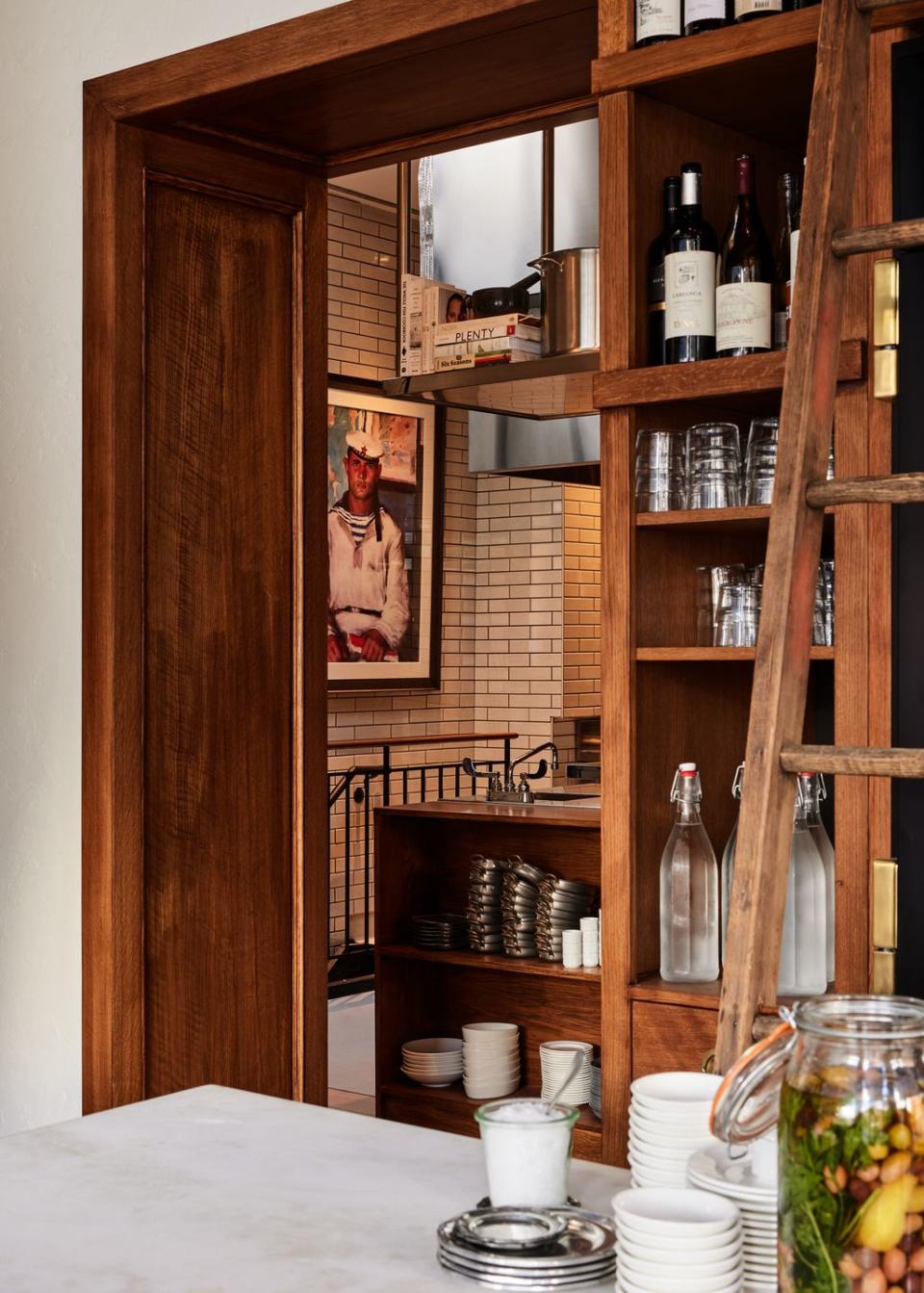
“I especially love the service island, which is an antique piece from France, circa 1900, to which we added a white stone counter,” Sturman says. “It anchors the dining room and serves as a place to hold our cakes. We also decant wine and serve from that island.”
Meanwhile, Paredes searched for objects that would bring history into the space, like an 18th-century ship-in-a-box that he found in North Carolina, which is now displayed behind the bar.
Make It Shipshape
The corner restaurant’s L-shaped design accommodates just 20 diners on the dining room side, and 18 seats on the bar side. “It’s a Rubik’s cube, it’s so tight—just like in a boat,” Paredes says. To make the most of the space, he took advantage of the height of the room, creating shelving that climbs to the ceiling for wine bottles. A rolling wooden library ladder provides access to the bottles at the top.
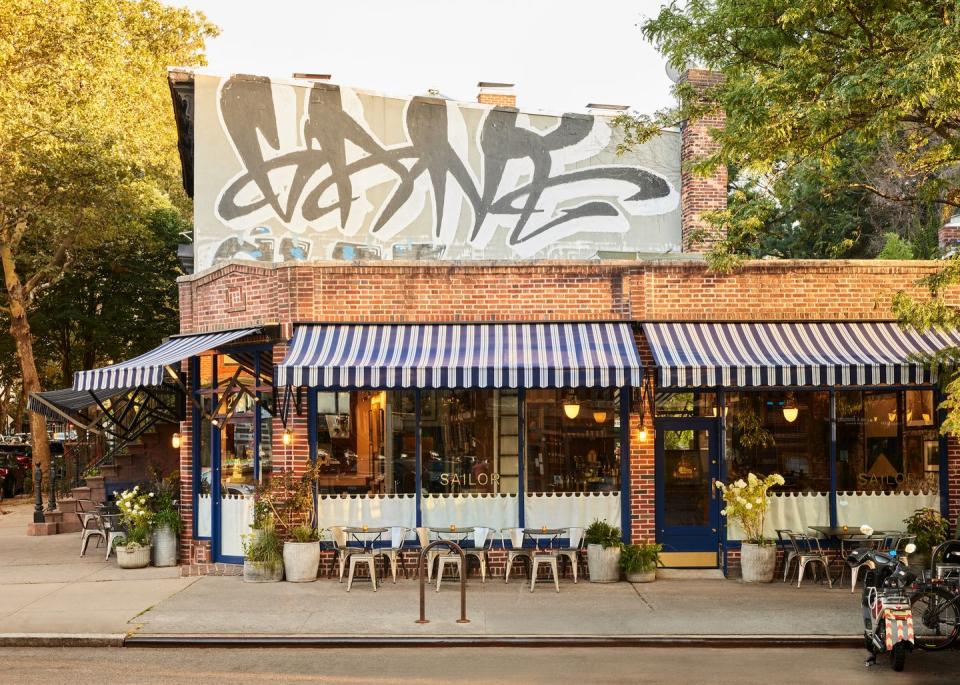
Don’t Forget Fancy Touches
It’s the little things, like white tablecloths and candlelight, that can elevate a space, Paredes says. The front door is in reeded glass with a gilded image of a 19th-century ship. He actually hesitated on one of his cutest ideas: adding a scalloped edge to the café curtains that frame the space. “I worried it would look too much like a wave,” he says—in other words, too obvious. “But it looked perfect and really set the restaurant up from the front.”
Keep It Classic
From the classic blue-and-white striped awning in Sunbrella fabric to the brass pendants and picture lights from Urban Archaeology, Paredes chose decor elements that feel timeless. “I learned from my days at Ralph that beautiful things last forever,” he says. “You don’t know what year it went in. That’s how I think. I distill to the classics.”
You Might Also Like

